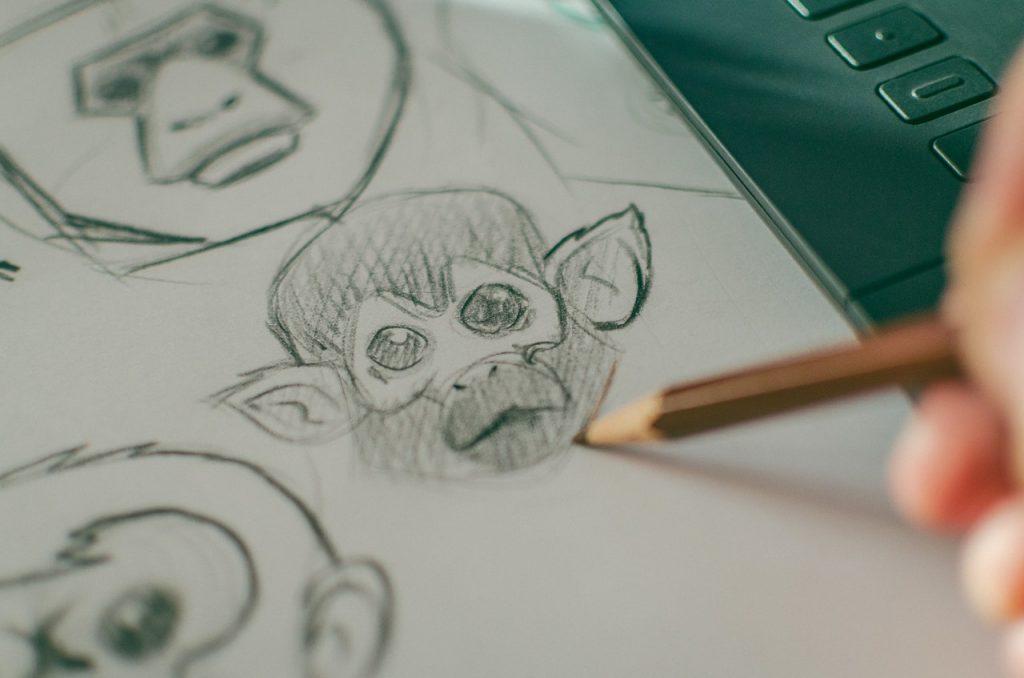For more Portfolio Tools, check out the Freelancer Toolkit…
So, you’ve got a few years of in-house or agency experience as an animation artist behind you, and you’ve been building your portfolio. You’ve created a reel that showcases your best work, and you’re confident enough in your skills and talent that you’re ready to break out on your own.
(Or maybe you want to launch your career as a freelancer and bypass the staff experience altogether).
Each path has its own challenges and merits. But, unless you have a healthy savings account, trust fund or inheritance to fall back on, the bottom line in either scenario is the same:
You need to make enough money to pay the bills.
Once you’ve established what that figure is (and have a game plan for securing the jobs to earn that money), you can enjoy the perks of being self-employed. That means working the schedule that suits you best, choosing the jobs you want to do and taking time off when you feel like it.
But you’re probably wondering: How much do freelance animators make?
In this article, we’ll give you the lowdown on exactly what a freelance animator can expect to earn on an hourly, daily and annual basis. We’ll also talk about how to set your rates if you’re looking to make the leap to freelancing.
“Until you value yourself, you won’t value your time. Until you value your time, you will not do anything with it.” –M. Scott Peck, author of “The Road Less Travelled”
How Much Do Freelance Animators Make?
When it comes to fees, there’s a pretty broad range to consider. However:
Freelance animators can expect to earn between $20-$150 per hour, depending on experience. This translates to an annual salary of between $39,000-$260,000.
Based on data from the many freelance animation jobs posted through Twine, here’s a more-detailed breakdown of what freelance animators can expect to make:
Freelance Animator Pay Scale
Junior | Mid-level | Expert | |
|---|---|---|---|
Hourly | $20-35 | $35-70 | $70-150 |
Daily | $150-250 | $250-500 | $500-1000 |
Weekly | $750-1,250 | $1,250-2,500 | $2,500-5,000 |
Annually | $39K-65K | $65K-130K | $130K-260K |
If you’re looking to get started in the industry, figuring out your weekly rate is simple: multiply your hourly fee by the number of hours you intend to work each week. So, if you set your hourly fee at $45 and want to limit your work week to 30 hours, then your weekly fee would be $1,350.
Figuring out the hourly fee, however, is another matter. It takes some honest self-evaluation. Some factors to consider:
- Your portfolio: Talent is one thing—and, granted, it’s a very important thing. But experience is another. It demonstrates an ability to work on a professional level—take a concept and create the animation that serves the client’s purpose. And it shows a degree of reliability.
- Peer review: Take a look at the going rate among your peers living in the same region. What are they charging, and how do their skills and experience compare to yours?
- Versatility: How broad is your expertise? Are you as adept at 3D animation as you are at 2D? Do you have experience with animated explainer videos? How much character creation have you done? The broader your skillset, the more justified you are in setting a higher fee.
Time & Money
There are a variety of ways that freelance animators structure their fees:
- Per hour
- Per week
- Per animation project
Hourly and weekly fees go hand-in-hand, obviously. And the latter, as you would expect, requires a lot of personal discretion. We’ll touch on that a bit more later. But first, let’s talk about time—or, more specifically, the value of an hour of yours.
Other Factors To Consider
Cost of Living
You’ve got to figure out how much you need to make to cover your bills each month. This part can be a bit mind-numbing, but it’s an essential part of the process. Here’s a checklist of the necessities you should work into the equation:
- Rent or mortgage payments
- Utilities
- Car payment and auto insurance
- Health care
- Credit card bills and loan payments
- Food
- Transportation costs (gas, or train or bus fees)
- Entertainment expenses
- Savings and cushion
- Taxes
It’s easy to forget that last one, but as Benjamin Franklin said way back in 1789:
Nothing in life is certain except death and taxes.
Consider setting aside 30 to 40 percent. So, continuing on with our $45 per hour example, if you plan to work 30 hours a week for 52 weeks a year, that will get you to $70,200. Deduct 35 percent for taxes ($24,570), and you’re left with $45,630.
And, as tempting as it might be, it’s best not to ignore building in a cushion. You’ll need it to get you through the dry periods—because an occasional drought is inevitable, whether it’s due to a well-deserved vacation or unforeseen circumstance.
Like I said, calculating all of these life expenses can be daunting. But don’t be discouraged. You can do this! You want to begin this new adventure knowing exactly what to expect—it’ll pave the way for success. Now, let’s talk about the fun stuff—the art of animation!
Job Hunting
Never underestimate the power of networking and technology. A few notes on both:
- Social media: Post often! Connect with other animators. Share your work. You want to establish a large circle of influence among fellow creatives. You never know what can come of those connections.
- Job posting sites: There are lots of great job boards that enhance your chances of being noticed. Twine stands apart from most for its wealth of creative categories—Video & Animation, Graphic & Design, Music & Audio.
- Professional organizations: Groups like the Computer Graphics Society and the Society For Animation Studies provide great networking opportunities. Even more importantly, they stay on top of trends and new technology, and offer workshops that share the knowledge with members.
Common Freelance Animation Jobs
The beauty of freelancing is the ability to choose the jobs you want.
However, if you’re just starting out, you may find yourself taking on projects more out of necessity than creative satisfaction.
Here’s a list of the 3 main types of jobs you can expect to encounter as a freelance animator:
Quick hits
These could be short 2D or 3D animations for websites or video advertisements. Often, a company will already have a storyline and character that aligns with its brand identity, so your job will be to make that concept a reality. These are great jobs starting out because they’ll bring in fast money.
This loading animation for Chronos is the perfect example of a simple project that delivers a quick buck:
Fun stuff
Character design (in 2D, 3D or stop motion) and story development falls into this category. Here’s where you can flex your creative muscle, but expect some back and forth with the client. The more creative freedom you have, the higher the odds the client will ask for revisions. But asking the right questions beforehand (more on this point in a bit) can help minimize that—it’ll give you a clear idea of what the client wants to see, and what might not fly:
Caption: These projects make for great portfolio builders, assuming the project has broad appeal like Stompy McWhale over here…
Mother lodes
Animation for computer games, television and feature films land at the top of the heap. These jobs pave the way for future gigs, can get you to the next level on the fee scale and look great on your resumé. There may be less creative freedom, but there’s a wealth of satisfaction.
History tells us that Vampire Boyfriend has a good shot of hitting it big:
You might recall earlier a reference to fees based on the project. With some of the jobs listed on this list, you might be better served scrapping your hourly fee and putting a price tag on the project.
For example, let’s say you’ve mastered the art of 2D animation and can whip up a short video in a day. Your talent might be worth more than those few hours would provide. In that case, a project fee might behoove you. The client may try to negotiate down—and it’s up to you whether you’re willing to do that.
For the most part, however, you’ll likely work on an hourly fee, in which case tracking your billable hours is crucial. Consider utilizing a platform such as Chronos, which was designed specifically for freelance professionals.
Key Questions
Keep in mind that each job comes with its own set of parameters. So you want to be sure you’ve got a handle on the scope of work before you say “Yes!” Be armed with a set of questions, like…
- How long is the video, and what type of animation is desired?
- What’s the target audience?
- Are character, storyboard and script creation involved?
- What about music and voice-overs—will the company be handling that, or would that be part of your job?
- Is there branding or particular phrasing that must be included?
- Is there a particular “vibe” or a previous video that this project should fall in line with?
- What’s the deadline?
Now you’ve got the framework for building your career as a freelance animator—from the fees you should charge to the kind of work you can expect, plus the questions to help you make an informed decision.
Now, to set you on your way, here are a few more words of wisdom from Walt Disney:
“Animation can explain whatever the mind of man can conceive. This facility makes it the most versatile and explicit means of communication yet devised for quick mass appreciation.”
About The Author: Max Gaynor is Founder & CEO of Chronos Time Tracking. He’s an SMB software industry veteran out in the Silicon Desert (Phoenix, AZ)…we’re trying to make that a thing, is it working?





